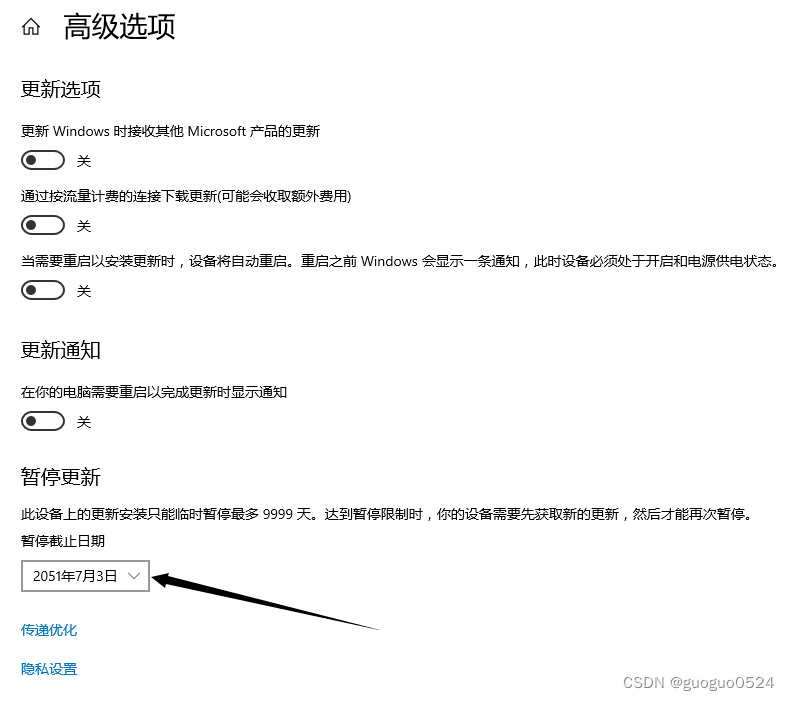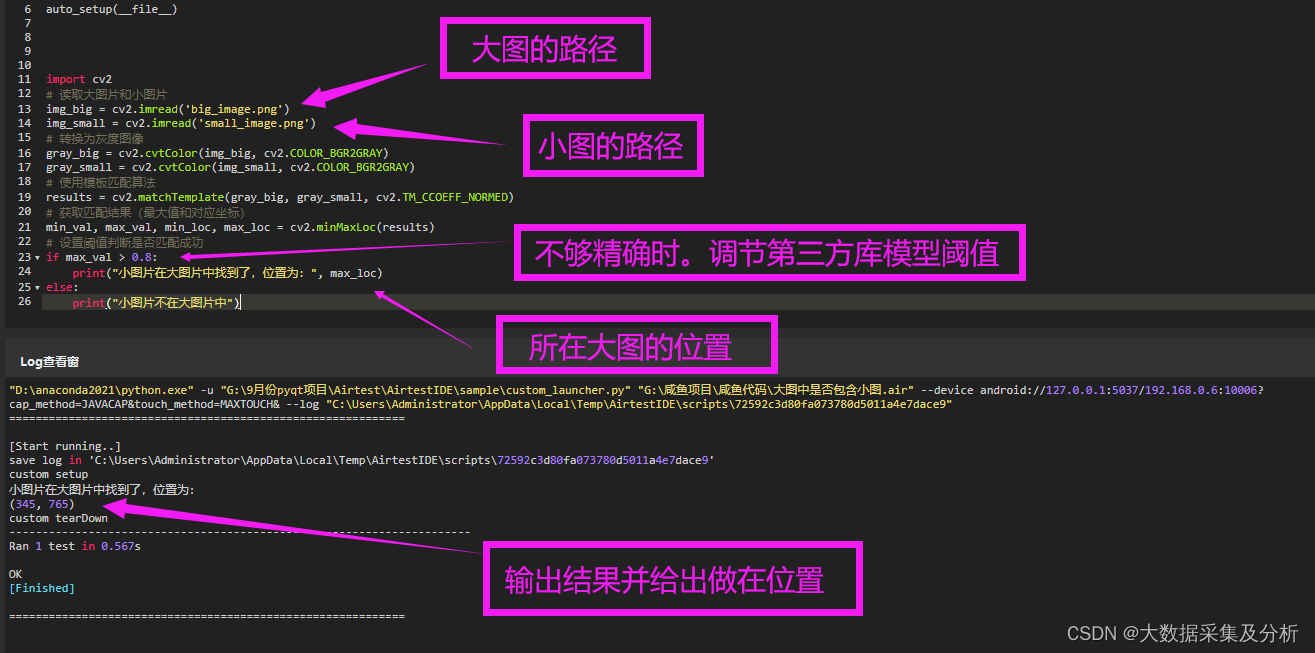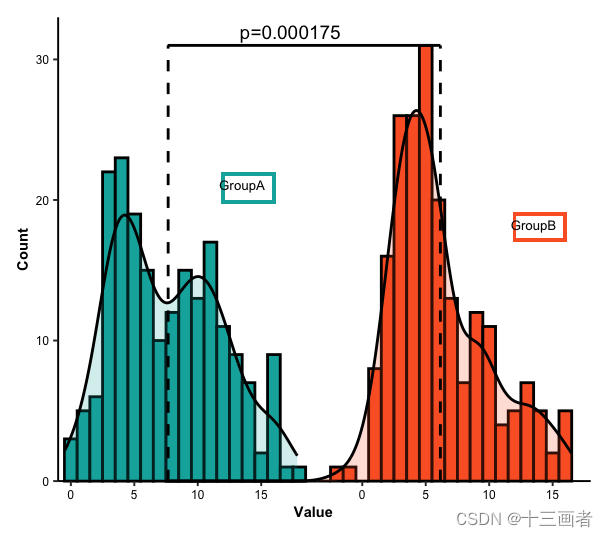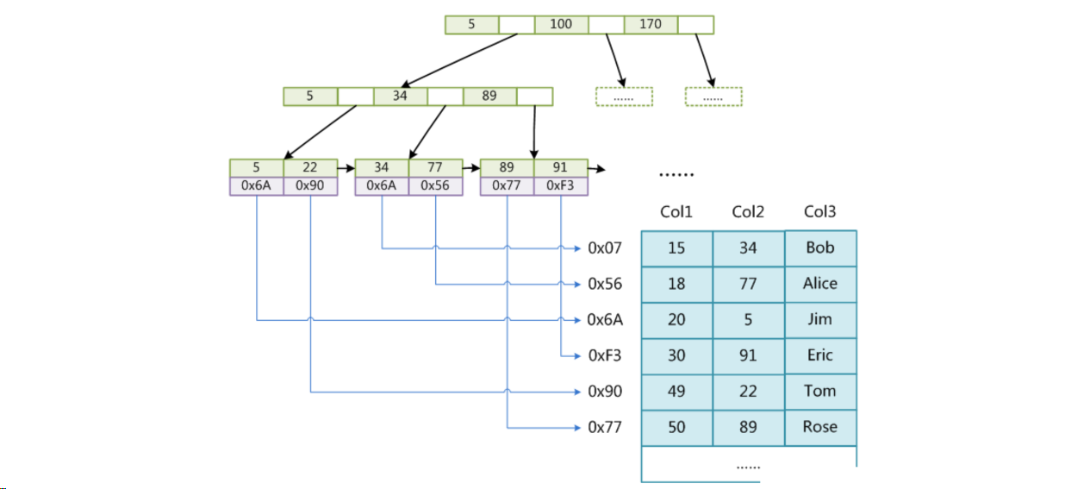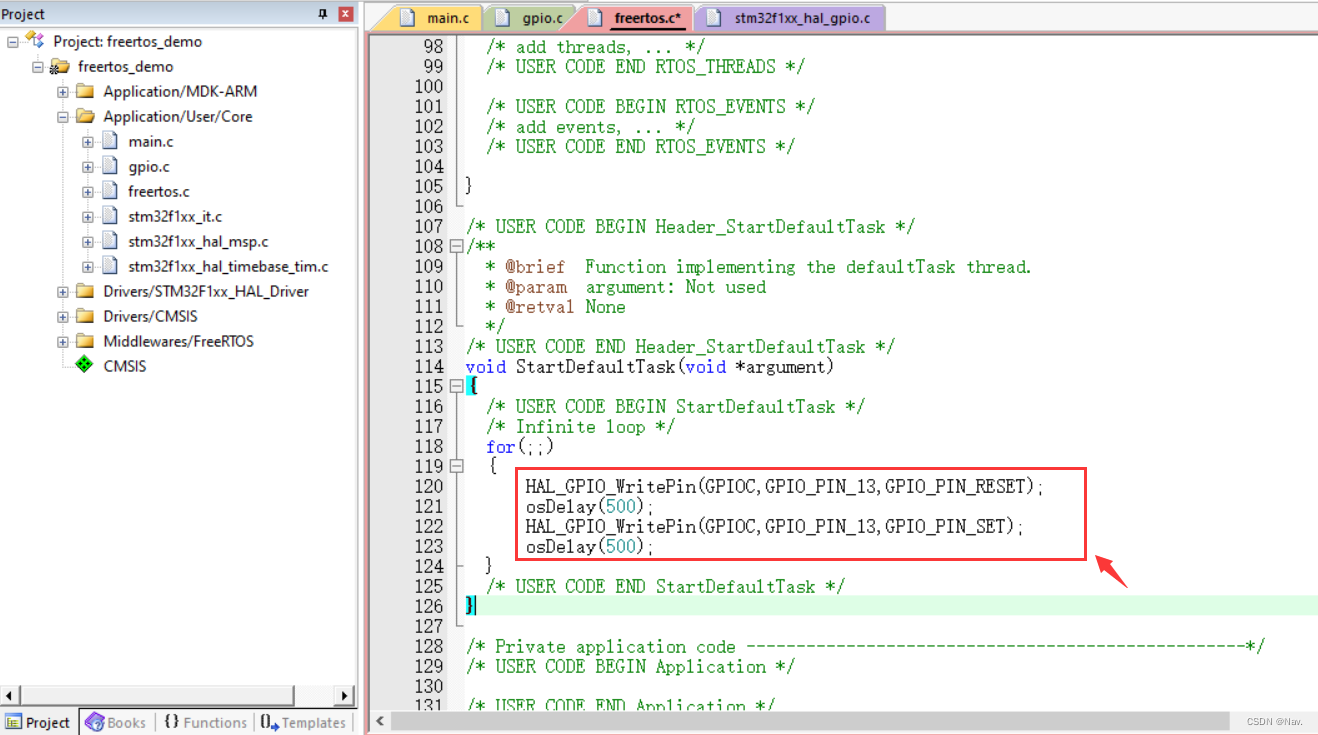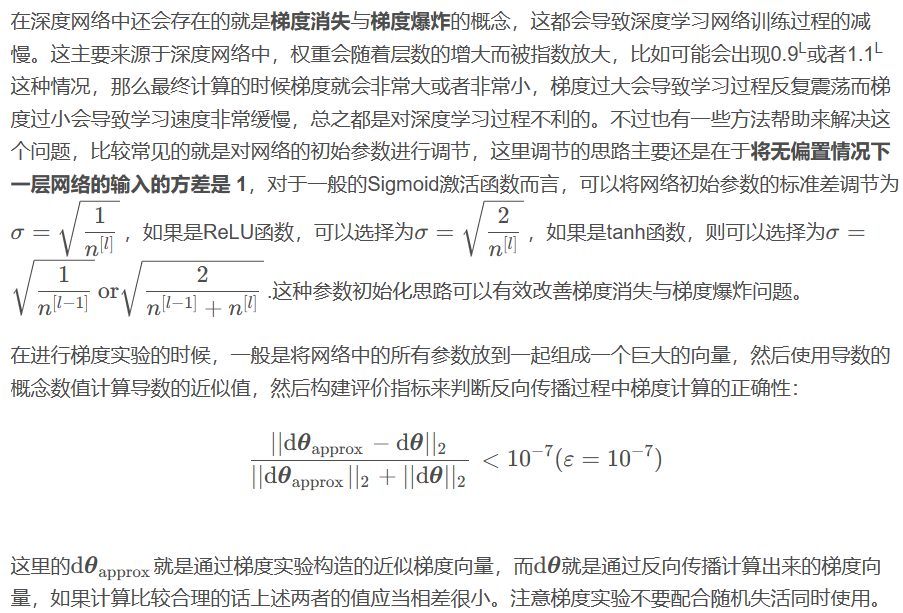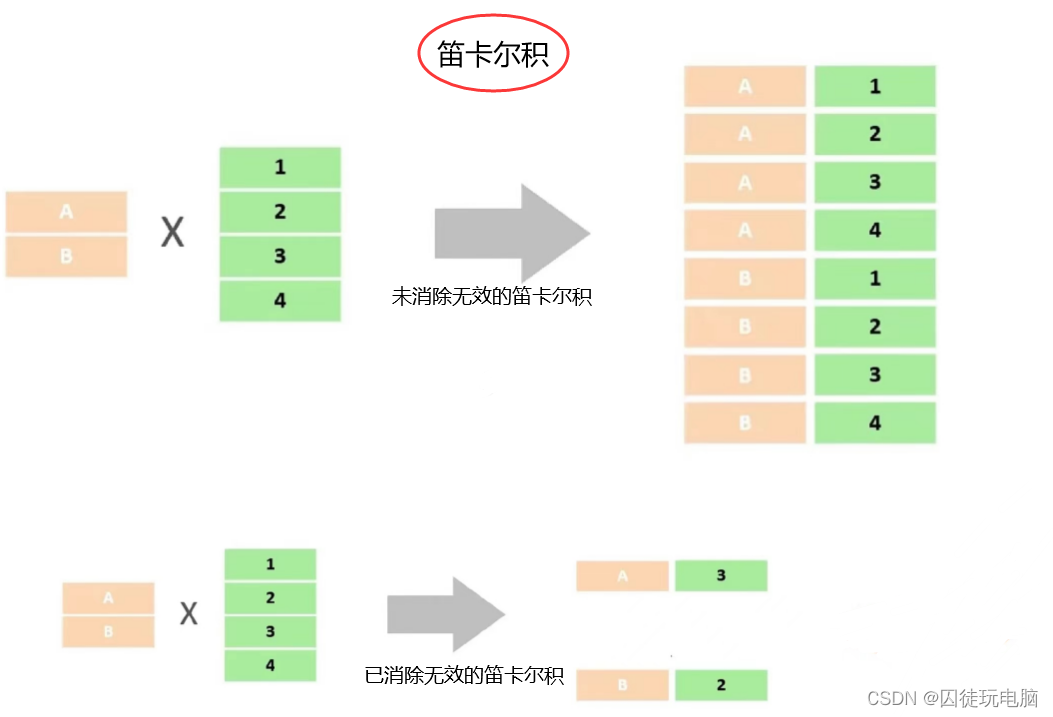


看着上面的图片,你可能对set和map的多样变化产生疑惑,下面我们就来详细讲解他们的区别以及实现
一.set/map
首先,在这里我们要声明,如果你对二叉搜索树一点都不了解的话,建议你先去将搜索二叉树学会再来学习这里的内容!!!
我也实现过一个二叉搜索树的内容,如下,仅供参考:
数据结构之搜素二叉树-CSDN博客
如果你了解过一些map/set的内容可能会知道,其实实现其是有两种方法的,注意:如果你连map和set是什么都不知道的话,建议Reference - C++ Reference
对于AVLTree实现和红黑树实现,STL中使用红黑树实现的,但是我们两种数据结构都会进行一定的讲解:
AVLTree实现:
#pragma once
template<class K,class V>
struct AVLTreeNode
{
//构造函数
AVLTreeNode(const pair<K,V>& kv)
:_left(nullptr),_right(nullptr),_parent(nullptr),_bf(0),_kv(kv)
{}
//成员变量
AVLTreeNode<K, V>* _left;
AVLTreeNode<K, V>* _right;
AVLTreeNode<K, V>* _parent;
int _bf;
pair<K,V> _kv;
};
template<class K,class V>
class AVLTree
{
typedef AVLTreeNode<K, V> Node;
public:
bool insert(const pair<K, V>& kv)
{
//两步骤:
//1.按照搜索二叉树规则插入
//特殊
if (_root == nullptr)
{
_root = new Node(kv);
return true;
}
Node* root = _root;
Node* parent = nullptr;
while (root)
{
//注意:比较的是第一个元素
if (root->_kv.first < kv.first)
{
parent = root;
root = root->_right;
}
else if (root->_kv.first > kv.first)
{
parent = root;
root = root->_left;
}
else
{
return false;
}
}
//通过parent来确定插入位置
root = new Node(kv);
if (parent->_kv.first < kv.first)//右边
{
parent->_right = root;
}
else
{
parent->_left = root;
}
root->_parent = parent;
//步骤二:根据平衡因子来修改AVL树
while (parent)
{
if (root == parent->_left)
parent->_bf--;
else
parent->_bf++;
//检查bf
if (parent->_bf == 0)
{
break;
}
else if (parent->_bf == 1 || parent->_bf == -1)
{
//说明要处理上面
root = root->_parent;
parent = parent->_parent;
}
else if (parent->_bf == 2 || parent->_bf == -2)
{
//旋转处理
//左单旋
if (parent->_bf == 2 && root->_bf == 1)
{
RotateL(parent);
}
//右单旋
else if (parent->_bf == -2 && root->_bf == -1)
{
RotateR(parent);
}
//左右双旋
else if (parent->_bf==-2 && root->_bf == 1 )
{
RotateLR(parent);
}
//右左双旋
else if (parent->_bf == 2 && root->_bf == -1)
{
RotateRL(parent);
}
else
{
return false;
}
break;//注意点
}
else
{
//出现其他情况,说明AVL树有问题
return false;
}
}
return true;
}
int height()
{
return _height(_root);
}
//序遍历
//中序遍历
void Preorder()
{
_Preorder(_root);
}
void Inorder()
{
_Inorder(_root);
}
void Postorder()
{
_Postorder(_root);
}
size_t size()
{
return _size(_root);
}
Node* find(const K& key)
{
Node* cur = _root;
while (cur)
{
if (cur->_kv.first < key)
{
cur = cur->_left;
}
else if (cur->_kv.first > key)
{
cur = cur->_right;
}
else
{
return cur;
}
}
return nullptr;
}
bool balance()
{
int height = 0;
return _balance(_root, height);
}
private:
bool _balance(Node* root, int& height)
{
if (root == nullptr)
{
height = 0;
return true;
}
int leftheight = 0, rightheight = 0;
//三查
if (!_balance(root->_left, leftheight) || !_balance(root->_right, rightheight))
{
return false;
}
if (abs(rightheight - leftheight) >= 2)
{
cout << root->_kv.first << "不平衡" << endl;
return false;
}
if (rightheight - leftheight != root->_bf)
{
cout << root->_kv.first << "平衡因子异常" << endl;
return false;
}
//重置height
height = max(leftheight, rightheight) + 1;
return true;
}
size_t _size(Node* root)
{
if (root == nullptr)
return 0;
return _size(root->_left) + _size(root->_right) + 1;
}
int _height(Node* root)
{
if (root == nullptr)
return 0;
int leftsub = _height(root->_left);
int rightsub = _height(root->_right);
return max(leftsub, rightsub) + 1;
}
void _Preorder(Node* root)
{
if (root == nullptr)
return;
cout << root->_kv.first << " " << root->_bf << endl;
_Inorder(root->_left);
_Inorder(root->_right);
}
void _Inorder(Node* root)
{
if (root == nullptr)
return;
_Inorder(root->_left);
cout << root->_kv.first << " " << root->_bf << endl;
_Inorder(root->_right);
}
void _Postorder(Node* root)
{
if (root == nullptr)
return;
_Inorder(root->_left);
_Inorder(root->_right);
cout << root->_kv.first << " " << root->_bf << endl;
}
//旋转操作:
void RotateL(Node* parent)
{
//保留四个节点:
Node* cur = parent->_right;
Node* curL = cur->_left;
Node* pparent = parent->_parent;
//开始改变指向操作
parent->_right = curL;
if(curL)//注意:需要检查curL是否为空
curL->_parent = parent;
cur->_left = parent;
parent->_parent = cur;
//开始检查pparent
if (parent == _root)
{
_root = cur;
cur->_parent = nullptr;
}
else
{
//检查pparent的左右子节点
if (pparent->_left == parent)
{
pparent->_left = cur;
cur->_parent = pparent;
}
else
{
pparent->_right = cur;
cur->_parent = pparent;
}
}
//改变_bf值
parent->_bf = 0;
cur->_bf = 0;
}
void RotateR(Node* parent)
{
//同理:记录四个子节点
Node* cur = parent->_left;
Node* curR = cur->_right;
Node* pparent = parent->_parent;
//操作
parent->_left = curR;
if (curR)
curR->_parent = parent;
parent->_parent = cur;
cur->_right = parent;
if (parent == _root)
{
_root = cur;
cur->_parent = nullptr;
}
else
{
//检查pparent的左右子节点
if (pparent->_left == parent)
{
pparent->_left = cur;
cur->_parent = pparent;
}
else
{
pparent->_right = cur;
cur->_parent = pparent;
}
}
//改变_bf值
parent->_bf = 0;
cur->_bf = 0;
}
void RotateLR(Node* parent)
{
//提前保留位置
Node* cur = parent->_left;
Node* curR = cur->_right;
int bf = curR->_bf;
//利用已实现的左右旋转来实现
RotateL(parent->_left);
RotateR(parent);
//修改bf
if (bf == 0)
{
parent->_bf = 0;
cur->_bf = 0;
curR->_bf = 0;
}
else if (bf == 1)
{
cur->_bf = -1;
parent->_bf = 0;
curR->_bf = 0;
}
else if (bf == -1)
{
parent->_bf = 1;
cur->_bf = 0;
curR->_bf = 0;
}
else
{
exit(-1);
}
}
void RotateRL(Node* parent)
{
//提前保留位置
Node* cur = parent->_right;
Node* curL = cur->_left;
int bf = curL->_bf;
//利用已实现的右左旋转来实现
RotateR(parent->_right);
RotateL(parent);
//修改bf
if (bf == -1)
{
parent->_bf = 0;
cur->_bf = 1;
curL->_bf = 0;
}
else if (bf == 1)
{
parent->_bf = -1;
cur->_bf = 0;
curL->_bf = 0;
}
else if (bf == 0)
{
parent->_bf = 0;
cur->_bf = 0;
curL->_bf = 0;
}
else
{
exit(-1);
}
}
private:
Node* _root = nullptr;
};
下面是红黑树的实现:
#pragma once
enum Color
{
RED,
BLACK
};
template <class T>
struct RBTreeNode
{
//成员函数:
//构造函数:
RBTreeNode(const T& date)
:_left(nullptr),_right(nullptr),_parent(nullptr),_date(date),_color(RED)
{}
//注意点:_color默认为红!!!
//成员变量:
RBTreeNode<T>* _left;
RBTreeNode<T>* _right;
RBTreeNode<T>* _parent;
T _date;
Color _color;
};
template<class T,class Ptr,class Ref>
struct RBTreeIterator
{
typedef RBTreeNode<T> Node;
typedef RBTreeIterator<T, Ptr, Ref> Self;
RBTreeIterator(Node* node)
:_node(node)
{}
//解引用
Ref operator*()
{
return _node->_date;
}
//取地址:
Ptr operator->()
{
return &(_node->_date);
}
//加减:
//前置++
Self& operator++()
{
//规则:1.如果有右节点,找右节点的最左节点
//2.如果无右节点,找子是父的左树
if (_node->_right)
{
//1.有右节点,找右节点的最左节点
Node* subright = _node->_right;
while (subright->_left)
{
subright = subright->_left;
}
_node = subright;
}
else
{
//2.无右节点,找子是父的左树
Node* cur = _node;
Node* parent = cur->_parent;
while (parent && cur== parent->_right)//防一波root
{
cur = parent;
parent = parent->_parent;
}
_node = parent;
}
return *this;
}
//后置++:
Self& operator++(int)
{
Self s = *this;
//规则:1.如果有右节点,找右节点的最左节点
//2.如果无右节点,找子是父的左树
if (_node->_right)
{
//1.有右节点,找右节点的最左节点
Node* subright = _node->_right;
while (subright->_left)
{
subright = subright->_left;
}
_node = subright;
}
else
{
//2.无右节点,找子是父的左树
Node* cur = _node;
Node* parent = cur->_parent;
while (parent && cur == parent->_right)//防一波root
{
cur = parent;
parent = parent->_parent;
}
_node = parent;
}
return s;
}
//--操作:
//前置--:
Self& operator--()
{
//规则:1.如果有左子树节点,找其最右节点
//2.如果无左子树节点,找子树是父的右节点位置
if (_node->_left)
{
Node* subL = _node->_left;
while (subL->_right)
{
subL->_right;
}
_node = subL;
}
else
{
Node* cur = _node;
Node* parent = cur->_parent;
while (parent && parent == cur->_left)
{
cur = parent;
parent = parent->_parent;
}
_node = parent;
}
return *this;
}
//后置--
Self& operator--(int)
{
Self s = *this;
//规则:1.如果有左子树节点,找其最右节点
//2.如果无左子树节点,找子树是父的右节点位置
if (_node->_left)
{
Node* subL = _node->_left;
while (subL->_right)
{
subL->_right;
}
_node = subL;
}
else
{
Node* cur = _node;
Node* parent = cur->_parent;
while (parent && parent == cur->_left)
{
cur = parent;
parent = parent->_parent;
}
_node = parent;
}
return s;
}
bool operator!=(const Self& s)
{
return !(_node == s._node);
}
bool operator==(const Self& s)
{
return _node==s._node;
}
//成员变量:
Node* _node;
};
template <class K,class T, class KeyOfT>
class RBTree
{
public:
typedef RBTreeNode<T> Node;
typedef RBTreeIterator<T, T*, T&> iterator;
typedef RBTreeIterator<T, const T*, const T&> const_iterator;
//迭代器:
iterator begin()
{
Node* subL = _root;
//找最左节点
while (subL && subL->_left)
{
subL = subL->_left;
}
return iterator(subL);
}
iterator end()
{
return iterator(nullptr);
}
const_iterator begin()const
{
Node* subL = _root;
while (subL && subL->_left)
{
subL = subL->_left;
}
return const_iterator(subL);
}
const_iterator end()const
{
return const_iterator(nullptr);
}
pair<iterator, bool> Insert(const T& date)
{
//插入分为两步操作:
//第一步:插入该节点位置
//1.检查_root是否为空
if (_root == nullptr)
{
_root = new Node(date);
//注意:规则:root节点颜色为黑
_root->_color = BLACK;
return make_pair(iterator(_root), true);
}
//2.利用两个Node*,找到要插入位置和其父节点位置
Node* cur = _root;
Node* parent = nullptr;
KeyOfT kot;
while (cur)
{
if (kot(cur->_date)<kot(date))
{
parent = cur;
cur = cur->_right;
}
else if (kot(cur->_date)> kot(date))
{
parent = cur;
cur = cur->_left;
}
else
{
//注意:相等报错
return make_pair(iterator(cur), false);;
}
}
//3.开空间链接_parent
cur = new Node(date);
Node* newnode = cur;
cur->_parent = parent;
if (kot(parent->_date)< kot(cur->_date))
{
parent->_right = cur;
}
else
{
parent->_left = cur;
}
//第二步:变色+旋转
while (parent && parent->_color == RED)
{
//1.找uncle
Node* grandparent = parent->_parent;
if (parent == grandparent->_left)
{
//分情况讨论:
Node* uncle = grandparent->_right;
if (uncle && uncle->_color == RED)
{
//1.uncle存在且为红
grandparent->_color = RED;
uncle->_color = BLACK;
parent->_color = BLACK;
//注意:这里不需要讨论是否为root情况,原因我们在循环判断中写了parent是否为空情况
cur = grandparent;
parent = cur->_parent;
}
else
{
//2.uncle不存在或者存在且为黑
if (cur == parent->_left)
{
//直接右旋
RotateR(grandparent);
//变色
parent->_color = BLACK;
grandparent->_color = RED;
}
else
{
RotateL(parent);
RotateR(grandparent);
grandparent->_color = RED;
cur->_color = BLACK;
}
//无论是哪种情况都会结束
break;
}
}
else//parent为grandparent右节点
{
//分情况讨论
Node* uncle = grandparent->_left;
//1.uncle存在且为红
if (uncle && uncle->_color == RED)
{
//变色
grandparent->_color = RED;
uncle->_color = BLACK;
parent->_color = BLACK;
//注意:这里不需要讨论是否为root情况,原因我们在循环判断中写了parent是否为空情况
cur = grandparent;
parent = cur->_parent;
}
else
{
//2.uncle可能不存在可能存在且为黑
if (cur == parent->_right)
{
//直接左旋
RotateL(grandparent);
//变色
grandparent->_color = RED;
parent->_color = BLACK;
}
else//cur位于左节点
{
//右左双旋
RotateR(parent);
RotateL(grandparent);
cur->_color = BLACK;
grandparent->_color = RED;
}
//无论是哪种情况都会结束
break;
}
}
}
_root->_color = BLACK;
return make_pair(iterator(newnode), true);
}
//三序遍历;
void Preorder()
{
_Preorder(_root);
}
void Inorder()
{
_Inorder(_root);
}
void Postorder()
{
_Postorder(_root);
}
size_t size()
{
return _size(_root);
}
size_t height()
{
return _height(_root);
}
iterator find(const K& date)
{
Node* cur = _root;
KeyOfT kot;
while (cur)
{
if (kot(cur->_date)<date)
{
cur = cur->_right;
}
else if (kot(cur->_date)>date)
{
cur = cur->_left;
}
else
{
return iterator(cur);
}
}
return end();
}
bool balance()
{
Node* cur = _root;
if (cur && cur->_color == RED)
{
cout << "root节点为红" << endl;
return false;
}
int stantard = 0;
while (cur)
{
if (cur->_color == BLACK)
{
stantard++;
}
cur = cur->_left;
}
return _balance(_root, 0, stantard);
}
//查看旋转次数
size_t GetRotate()
{
return rotatesize;
}
private:
bool _balance(Node* cur, int blacknum, int stantard)
{
if (cur == nullptr)
{
if (blacknum != stantard)
{
cout << "黑节点个数不匹配" << endl;
return false;
}
return true;
}
//规则二:不能连续出现红节点
if (cur->_color == RED && cur->_parent->_color == RED)
{
cout << "连续出现红节点" << endl;
return false;
}
if (cur->_color == BLACK)
{
blacknum++;
}
return _balance(cur->_left, blacknum, stantard) && _balance(cur->_right, blacknum, stantard);
}
size_t _height(Node* root)
{
if (root == nullptr)
return 0;
else
return max(_height(root->_left), _height(root->_right)) + 1;
}
size_t _size(Node* root)
{
if (root == nullptr)
return 0;
else
return _size(root->_left) + _size(root->_right) + 1;
}
void _Postorder(Node* root)
{
if (root == nullptr)
return;
_Postorder(root->_left);
_Postorder(root->_right);
cout << root->_date<< endl;
}
void _Inorder(Node* root)
{
if (root == nullptr)
return;
_Inorder(root->_left);
cout << root->_date << endl;
_Inorder(root->_right);
}
void _Preorder(Node* root)
{
if (root == nullptr)
return;
cout << root->_date << endl;
_Preorder(root->_left);
_Preorder(root->_right);
}
//旋转操作:
//左旋:
void RotateL(Node* parent)
{
rotatesize++;
Node* subR = parent->_right;
Node* subRL = subR->_left;
Node* pparent = parent->_parent;
//链接
if(subRL)//防止subRL为空情况
subRL->_parent = parent;
parent->_right = subRL;
subR->_left = parent;
parent->_parent = subR;
if (parent == _root)
{
_root = subR;
subR->_parent = nullptr;
}
else
{
if (pparent->_left == parent)
{
pparent->_left = subR;
}
else
{
pparent->_right = subR;
}
subR->_parent = pparent;
}
}
//右旋:
void RotateR(Node* parent)
{
rotatesize++;
Node* subL = parent->_left;
Node* subLR = subL->_right;
Node* pparent = parent->_parent;
if (subLR)
subLR->_parent = parent;
parent->_left = subLR;
subL->_right = parent;
parent->_parent = subL;
if (parent == _root)
{
_root = subL;
subL->_parent = nullptr;
}
else
{
if (pparent->_left == parent)
{
pparent->_left = subL;
}
else
{
pparent->_right = subL;
}
subL->_parent = pparent;
}
}
private:
Node* _root = nullptr;
size_t rotatesize = 0;
};我们这里就和系统一样直接套用红黑树实现吗,map和set
如下:
#pragma once
#include "RBTree.h"
namespace cx
{
template<class K>
class set
{
struct KeyOfT
{
const K& operator()(const K& key)
{
return key;
}
};
public:
typedef typename RBTree<K, const K, KeyOfT>::iterator iterator;
typedef typename RBTree<K, const K, KeyOfT>::const_iterator const_iterator;
iterator begin()
{
return _t.begin();
}
iterator end()
{
return _t.end();
}
const_iterator begin()const
{
return _t.begin();
}
const_iterator end()const
{
return _t.end();
}
iterator Find(const K& date)
{
return _t.find(date);
}
pair<iterator, bool> Insert(const K& date)
{
return _t.Insert(date);
}
private:
RBTree<K, const K, KeyOfT> _t;
};
};
#pragma once
#include "RBTree.h"
namespace cx
{
template<class K,class V>
class map
{
struct KeyOfT
{
const K& operator()(const pair<K, V>& kv)
{
return kv.first;
}
};
public:
typedef typename RBTree<K, pair<const K, V>, KeyOfT>::iterator iterator;
typedef typename RBTree<K, pair<const K, V>, KeyOfT>::const_iterator const_iterator;
iterator begin()
{
return _p.begin();
}
iterator end()
{
return _p.end();
}
const_iterator begin()const
{
return _p.begin();
}
const_iterator end()const
{
return _p.end();
}
pair<iterator, bool> Insert(const pair<K, V>& kv)
{
return _p.Insert(kv);
}
iterator Find(const K& date)
{
return _p.find(date);
}
V& operator[](const K& key)
{
pair<iterator, bool> ret = Insert(make_pair(key, V()));
return (ret.first)->second;
//ret.first是iterator,iterator的second为( RBTreeIterator<T, T*, T&> iterator)T*
//T* 在这里为 <class K,class T, class KeyOfT> 为第二个参数pair<const K, V>
//所以这里结果为pair
}
private:
RBTree<K, pair<const K, V>, KeyOfT> _p;
};
};
这里我也写过测试用例:
#include <iostream>
using namespace std;
#include "map.h"
#include "set.h"
#include "RBTree.h"
using namespace cx;
//
//void test_map2()
//{
// string arr[] = { "ƻ", "", "ƻ", "", "ƻ", "ƻ", "",
//"ƻ", "㽶", "ƻ", "", "㽶", "ݮ" };
// map<string, int> countMap;
// for (auto& e : arr)
// {
// /*if (e == "ݮ")
// {
// int i = 0;
// }*/
// countMap[e]++;
// }
//
// for (auto& kv : countMap)
// {
// cout << kv.first << ":" << kv.second << endl;
// }
// cout << endl;
//}
//void test_set1()
//{
// set<int> s;
// int a[] = { 4, 2, 6, 1, 3, 5, 15, 7, 16, 14 };
// for (auto e : a)
// {
// s.insert(e);
// }
//
// set<int>::iterator it = s.begin();
// while (it != s.end())
// {
// //if(*it % 2 == 0)
// // *it += 100;
//
// cout << *it << " ";
// ++it;
// }
// cout << endl;
//}
//}
//void test_map1()
//{
// map<string, string> dict;
// dict.insert(pair<string, string>("sort", "排序"));
//
// //pair<string, string> kv("string", "字符串");
// pair<string, string> kv = { "string", "字符串" };
// dict.insert(kv);
//
// // C++11 多参数隐式类型转换(构造函数)
// dict.insert({ "apple", "苹果" });
//
// // C++98
// dict.insert(make_pair("sort", "排序"));
//
// //map<string, string>::iterator it = dict.begin();
// auto it = dict.begin();
// while (it != dict.end())
// {
// //cout << *it << endl;
// //cout << (*it).first << (*it).second << endl;
// cout << it->first << it->second << endl;
// ++it;
// }
// cout << endl;
//
// for (auto& kv : dict)
// {
// cout << kv.first << ":" << kv.second << endl;
// }
// cout << endl;
//}
//
//void test_map2()
//{
// // key相同,value不同,不会插入也不会更新
// map<string, string> dict;
// dict.insert(make_pair("sort", "排序"));
// dict.insert(make_pair("string", "字符串"));
// dict.insert(make_pair("sort", "xxx"));
//
// dict["left"]; // 插入
// cout << dict["sort"] << endl; // 查找
// dict["sort"] = "xxx"; // 修改
// dict["right"] = "右边"; // 插入+修改
//
// for (auto& kv : dict)
// {
// cout << kv.first << ":" << kv.second << endl;
// }
// cout << endl;
//}
//
//void test_map3()
//{
// multimap<string, string> dict;
// dict.insert(make_pair("sort", "排序"));
// dict.insert(make_pair("string", "字符串"));
// dict.insert(make_pair("sort", "xxx"));
// dict.insert(make_pair("sort", "排序"));
//
// for (auto& kv : dict)
// {
// cout << kv.first << ":" << kv.second << endl;
// }
// cout << endl;
//}
//
//void test_map4()
//{
// string arr[] = { "苹果", "西瓜", "苹果", "西瓜", "苹果", "苹果", "西瓜",
//"苹果", "香蕉", "苹果", "西瓜", "香蕉", "草莓" };
// map<string, int> countMap;
// //for (auto& e : arr)
//{
// map<string, int>::iterator it = countMap.find(e);
// if (it != countMap.end())
// {
// it->second++;
// }
// else
// {
// countMap.insert(make_pair(e, 1));
// }
//}
//for (auto& e : arr)
//{
// pair<map<string, int>::iterator, bool> ret;
// ret = countMap.insert(make_pair(e, 1));
// // 已经存在了
// if (ret.second == false)
// {
// ret.first->second++;
// }
//}
// for (auto& e : arr)
// {
// countMap[e]++;
// }
//
// for (auto& kv : countMap)
// {
// //kv.first = "xxx";
// //kv.second = 1;
// cout << kv.first << ":" << kv.second << endl;
// }
// cout << endl;
//}
void test_set1()
{
cx::set<int> s;
int a[] = { 4, 2, 6, 1, 3, 5, 15, 7, 16, 14 };
for (auto e : a)
{
s.Insert(e);
}
set<int>::iterator it = s.begin();
while (it != s.end())
{
//if(*it % 2 == 0)
// *it += 100;
cout << *it << " ";
++it;
}
cout << endl;
}
void test_map1()
{
map<int, int> m;
int a[] = { 4, 2, 6, 1, 3, 5, 15, 7, 16, 14 };
for (auto e : a)
{
m.Insert(make_pair(e, e));
}
map<int, int>::iterator it = m.begin();
while (it != m.end())
{
//it->first += 100;
it->second += 100;
cout << it->first << ":" << it->second << endl;
++it;
}
cout << endl;
}
void test_map2()
{
string arr[] = { "ƻ", "", "ƻ", "", "ƻ", "ƻ", "","ƻ", "㽶", "ƻ", "", "㽶", "ݮ" };
map<string, int> countMap;
for (auto& e : arr)
{
countMap[e]++;
}
for (auto& kv : countMap)
{
cout << kv.first << ":" << kv.second << endl;
}
cout << endl;
}
void test_set2()
{
set<int> s;
s.Insert(3);
s.Insert(1);
s.Insert(5);
s.Insert(7);
for (auto e : s)
{
cout << e << " ";
}
cout << endl;
}
void test_map3()
{
string arr[] = { "苹果", "西瓜", "苹果", "西瓜", "苹果", "苹果", "西瓜",
"苹果", "香蕉", "苹果", "西瓜", "香蕉", "草莓" };
map<string, int> countMap;
for (auto& e : arr)
{
countMap[e]++;
}
for (auto& kv : countMap)
{
cout << kv.first << ":" << kv.second << endl;
}
cout << endl;
}
int main()
{
//test_map1();
//test_set1();
//test_map2();
//test_set2();
test_map3();
return 0;
}二.multimap/multiset
这两个也是用红黑树实现的,所以大家只需要去能清楚和map/set的区别即可!!!
区别如下:
1.multiset中在底层中存储的是的键值对
2. mtltiset的插入接口中只需要插入即可
3. 与set的区别是,multiset中的元素可以重复,set是中value是唯一的
4. 使用迭代器对multiset中的元素进行遍历,可以得到有序的序列
5. multiset中的元素不能修改
6. 在multiset中找某个元素,时间复杂度为$O(log_2 N)$
7. multiset的作用:可以对元素进行排序
8.multimap和map的唯一不同就是:map中的key是唯一的,而multimap中key是可以 重复的。
还需要注意的一点是:
只有map支持[]!!!
三.unordered_set/map
与之前不同这里使用哈希实现的
如果不想出现哈希冲突,我们可以直接定值法,但是容易出现空间消耗过大情况
所以我们更倾向于解决哈希冲突,方法如下:
1.闭散列:
我们可以直接用线性探测解决,也可以用二次探测解决:
实现如下:
#pragma once
namespace cx_open_address
{
//一.哈希冲突线性探测解决问题法:
/
//以下插入、查找、删除操作都只适用int类型:
需要表示状态:
//enum State
//{
// EMPTY,
// EXIST,
// DELETE
//};
哈希数据:
//template <class K,class V>
//class HashDate
//{
//public:
// pair<K, V> _kv;
// State _state = EMPTY;//默认为空
//};
哈希table实现:
//template<class K,class V>
//class Hashtable
//{
//public:
// Hashtable(size_t size = 10)
// {
// _tables.resize(size);//用resize可以直接先开到size=capacity大小
// }
//
//
// //以下插入、查找、删除操作都只适用int类型:
// //插入操作:
// bool Insert(const pair<K, V>& kv)
// {
// //检查是否存在
// if (Find(kv.first))
// return false;
// //利用平衡因子解决扩容问题:
// //if(_n*1.0/_tables.size()>=0.7)
// if (_n * 10 / _tables.size() >= 7)
// {
// //利用新hashtables来实现扩容
// Hashtable<K, V> newtables(_tables.size() * 2);
// //遍历原tables,插入到新tables
// for (auto& e : _tables)
// {
// if (e._state == EXIST)
// {
// newtables.Insert(e._kv);
// }
// }
// //将新tables与原tables交换
// _tables.swap(newtables._tables);
// }
// //正常的线性探测插入操作:
// size_t hashi = kv.first % _tables.size();
// while (_tables[hashi]._state == EXIST)
// {
// hashi++;
// hashi %= _tables.size();
// }
// //插入操作:
// _tables[hashi]._kv = kv;
// _tables[hashi]._state = EXIST;
// _n++;//统计的元素个数也增加
// return true;
// }
// HashDate<K, V>* Find(const K& key)
// {
// //这里是线性探测
// //规则:如果当前位置已经有值了,向后查找空位置
// size_t hashi = key % _tables.size();//假设现在数据为int
// //后面我们在回到string等其他类型
// while (_tables[hashi]._state != EMPTY)
// {
// //当前位置已经存在数据,开始查找
// //情况一:如果我们当前位置存的数据就是key
// if (key == _tables[hashi]._kv.first &&
// _tables[hashi]._state == EXIST)
// {
// return &_tables[hashi];
// }
// //情况二:起始位置存的是其他值,现在我们要向后找
// hashi++;
// //注意:%
// hashi %= _tables.size();
// }
// //如果没位置,返回nullptr
// return nullptr;
// }
// bool Erase(const K& key)
// {
// //利用Find查找
// HashDate<K, V>* ans = Find(key);
// //如果存在就删除
// if (ans)
// {
// _n--;
// ans->_state = DELETE;
// return true;
// }
// else
// {
// //不存在,返回false
// return false;
// }
// }
//private:
// vector<HashDate<K, V>> _tables;
// size_t _n = 0;//统计个数
//};
//下面我们写出适用所有类型的写法:
//需要表示状态:
enum State
{
EMPTY,
EXIST,
DELETE
};
//哈希数据:
template <class K, class V>
class HashDate
{
public:
pair<K, V> _kv;
State _state = EMPTY;//默认为空
};
template<class K>
struct HashFunc
{
size_t operator()(const K& key)
{
//返回size
return (size_t)key;
}
};
//模版特化:
//string类:
template<>
struct HashFunc<string>
{
size_t operator()(const string& s)
{
size_t hash = 0;
//
for (auto e : s)
{
hash += e;
hash *= 131;
}
return hash;
}
};
//日期类特化:
struct Date
{
int _year;
int _month;
int _day;
};
template<>
struct HashFunc<Date>
{
size_t operator()(const Date& d)
{
size_t hash = 0;
hash += d._year;
hash *= 131;
hash += d._month;
hash *= 131;
hash += d._day;
hash *= 131;
return hash;
}
};
//pesron类特化:
struct Person
{
string _name;
string _id; // 身份证号码
string _tel;
int _age;
string _class;
string _address;
};
template<>
struct HashFunc<Person>
{
size_t operator()(const Person& p)
{
size_t hash = 0;
//选择一项进行计算:
for (auto e : p._id)
{
hash += e;
hash *= 131;
}
return hash;
}
};
//哈希table实现:
template<class K, class V,class Hash=HashFunc<K>>
class Hashtable
{
public:
Hashtable(size_t size = 10)
{
_tables.resize(size);//用resize可以直接先开到size=capacity大小
}
//多类型实现:
//插入操作:
bool Insert(const pair<K, V>& kv)
{
//检查是否存在
if (Find(kv.first))
return false;
//利用平衡因子解决扩容问题:
//if(_n*1.0/_tables.size()>=0.7)
if (_n * 10 / _tables.size() >= 7)
{
//利用新hashtables来实现扩容
Hashtable<K, V> newtables(_tables.size() * 2);
//遍历原tables,插入到新tables
for (auto& e : _tables)
{
if (e._state == EXIST)
{
newtables.Insert(e._kv);
}
}
//将新tables与原tables交换
_tables.swap(newtables._tables);
}
//正常的线性探测插入操作:
Hash hs;
size_t hashi = hs(kv.first) % _tables.size();
while (_tables[hashi]._state == EXIST)
{
hashi++;
hashi %= _tables.size();
}
//插入操作:
_tables[hashi]._kv = kv;
_tables[hashi]._state = EXIST;
_n++;//统计的元素个数也增加
return true;
}
HashDate<K, V>* Find(const K& key)
{
//这里是线性探测
//规则:如果当前位置已经有值了,向后查找空位置
Hash hs;
size_t hashi = hs(key) % _tables.size();//假设现在数据为int
//后面我们在回到string等其他类型
while (_tables[hashi]._state != EMPTY)
{
//当前位置已经存在数据,开始查找
//情况一:如果我们当前位置存的数据就是key
if (key == _tables[hashi]._kv.first &&
_tables[hashi]._state == EXIST)
{
return &_tables[hashi];
}
//情况二:起始位置存的是其他值,现在我们要向后找
hashi++;
//注意:%
hashi %= _tables.size();
}
//如果没位置,返回nullptr
return nullptr;
}
bool Erase(const K& key)
{
//利用Find查找
HashDate<K, V>* ans = Find(key);
//如果存在就删除
if (ans)
{
_n--;
ans->_state = DELETE;
return true;
}
else
{
//不存在,返回false
return false;
}
}
private:
vector<HashDate<K, V>> _tables;
size_t _n = 0;//统计个数
};
///
//哈希冲突二次探测解决问题法:
//与线性探测不同点:不再是一个个向后查找,而是一个数的次方不断增大方式查找空余空间,其余大体相同
//这里不进行实现!!!
}
2.开散列:
//不管是线性探测还是二次探测,都是闭散列解决哈希冲突,下面我们实现开散列解决哈希冲突
namespace cx_hash_bucket//cx_close_address
{
//每个节点存放的值:
template<class K,class V>
struct HashNode
{
HashNode(const pair<K, V>& kv)
:_next(nullptr)
, _kv(kv)
{}
HashNode<K, V>* _next;
pair<K, V> _kv;
};
template<class K>
struct HashFunc
{
size_t operator()(const K& key)
{
//返回size
return (size_t)key;
}
};
//模版特化:
//string类:
template<>
struct HashFunc<string>
{
size_t operator()(const string& s)
{
size_t hash = 0;
//
for (auto e : s)
{
hash += e;
hash *= 131;
}
return hash;
}
};
//日期类特化:
struct Date
{
int _year;
int _month;
int _day;
};
template<>
struct HashFunc<Date>
{
size_t operator()(const Date& d)
{
size_t hash = 0;
hash += d._year;
hash *= 131;
hash += d._month;
hash *= 131;
hash += d._day;
hash *= 131;
return hash;
}
};
//pesron类特化:
struct Person
{
string _name;
string _id; // 身份证号码
string _tel;
int _age;
string _class;
string _address;
};
template<>
struct HashFunc<Person>
{
size_t operator()(const Person& p)
{
size_t hash = 0;
//选择一项进行计算:
for (auto e : p._id)
{
hash += e;
hash *= 131;
}
return hash;
}
};
template<class K,class V,class Hash= HashFunc<K>>
class Hashtable
{
typedef HashNode<K, V> Node;
public:
Hashtable(const size_t size=10)
{
_tables.resize(size,nullptr);
_n = 0;
}
~Hashtable()
{
//深拷贝
for (size_t i = 0; i < _tables.size(); i++)
{
Node* cur = _tables[i];
while (cur)
{
Node* next = cur->_next;
delete cur;
cur = next;
}
_tables[i] = nullptr;
}
}
//操作;
bool Insert(const pair<K, V>& kv)
{
//同理
if (Find(kv.first))
return false;
//当负载因子达到一扩容
Hash hs;
if (_n == _tables.size())
{
vector<Node*> newtables(_tables.size() * 2,nullptr);
//遍历原数组
for (int i = 0; i < _tables.size(); i++)
{
Node* cur=_tables[i];
while (cur)
{
Node* next=cur->_next;
//头插到新表
size_t hashi = hs(cur->_kv.first) % newtables.size();
cur->_next = newtables[hashi];
newtables[hashi] = cur;
cur = next;
}
_tables[i] = nullptr;
}
//交换
_tables.swap(newtables);
}
//头插插入
size_t hashi = hs(kv.first) % _tables.size();
Node* newnode = new Node(kv);
newnode->_next = _tables[hashi];
_tables[hashi] = newnode;
_n++;
return true;
}
Node* Find(const K& key)
{
Hash hs;
size_t hashi = hs(key) % _tables.size();
Node* cur = _tables[hashi];
while (cur)
{
if (cur->_kv.first == key)
{
return cur;
}
cur = cur->_next;
}
return nullptr;
}
bool Erase(const K& key)
{
Hash hs;
size_t hashi = hs(key) % _tables.size();
Node* cur = _tables[hashi];
Node* prev = nullptr;
while (cur)
{
if (cur->_kv.first == key)
{
//删除注意分情况:
//1.prev为空
//2.删除非头
if (prev)
{
prev->_next = cur->_next;
}
else
{
_tables[hashi] = cur->_next;
}
delete cur;
cur = nullptr;
_n--;
return true;
}
prev = cur;
cur = cur->_next;
}
return false;
}
private:
vector<Node*> _tables;
size_t _n = 0;
};
}下面我们利用开散列实现STL中的哈希:
#pragma once
#include "hash.h"
namespace cx
{
template<class K,class V,class Hash = HashFunc<K>>
class myunordered_map
{
struct MapKeyOfT
{
const K& operator()(const pair<K,V>& kv)
{
return kv.first;
}
};
public:
typedef typename Hashtable<K, const K, MapKeyOfT, Hash>::iterator iterator;
iterator begin()
{
return _ht.begin();
}
iterator end()
{
return _ht.end();
}
bool Insert(const pair<K,V>& kv)
{
return _ht.Insert(kv);
}
bool Erase(const K& key)
{
return _ht.Erase(key);
}
private:
Hashtable<K, pair<const K,V>, MapKeyOfT, Hash> _ht;
};
}#pragma once
#include "hash.h"
namespace cx
{
template<class K,class Hash= HashFunc<K>>
class myunordered_set
{
struct SetKeyOfT
{
const K& operator()(const K& key)
{
return key;
}
};
public:
typedef typename Hashtable<K, const K, SetKeyOfT, Hash>::iterator iterator;
iterator begin()
{
return _ht.begin();
}
iterator end()
{
return _ht.end();
}
bool Insert(const K& key)
{
return _ht.Insert(key);
}
bool Erase(const K& key)
{
return _ht.Erase(key);
}
private:
Hashtable<K, const K, SetKeyOfT, Hash> _ht;
};
}#pragma once
//cx_close_address
//每个节点存放的值:
template<class T>
struct HashNode
{
HashNode(const T& data)
:_next(nullptr)
, _data(data)
{}
HashNode<T>* _next;
T _data;
};
template<class K>
struct HashFunc
{
size_t operator()(const K& key)
{
//返回size
return (size_t)key;
}
};
//模版特化:
//string类:
template<>
struct HashFunc<string>
{
size_t operator()(const string& s)
{
size_t hash = 0;
//
for (auto e : s)
{
hash += e;
hash *= 131;
}
return hash;
}
};
//日期类特化:
struct Date
{
int _year;
int _month;
int _day;
};
template<>
struct HashFunc<Date>
{
size_t operator()(const Date& d)
{
size_t hash = 0;
hash += d._year;
hash *= 131;
hash += d._month;
hash *= 131;
hash += d._day;
hash *= 131;
return hash;
}
};
//pesron类特化:
struct Person
{
string _name;
string _id; // 身份证号码
string _tel;
int _age;
string _class;
string _address;
};
template<>
struct HashFunc<Person>
{
size_t operator()(const Person& p)
{
size_t hash = 0;
//选择一项进行计算:
for (auto e : p._id)
{
hash += e;
hash *= 131;
}
return hash;
}
};
// 前置声明
template<class K, class T, class KeyOfT, class Hash>
class Hashtable;
template<class K, class T, class KeyOfT, class Hash>
struct __HTIterator
{
typedef HashNode<T> Node;
typedef Hashtable<K, T, KeyOfT, Hash> HT;
typedef __HTIterator<K, T, KeyOfT, Hash> Self;
//常见操作:
__HTIterator(Node* node,HT* ht)
:_node(node),_ht(ht)
{}
T& operator*()
{
return _node->_data;
}
Self& operator++()
{
if (_node->_next)
{
_node = _node->_next;
}
else
{
//当前桶已满,找下一个桶
KeyOfT kot;
Hash hs;
size_t hashi = hs(kot(_node->_data)) % _ht->_tables.size();
hashi++;
while (hashi < _ht->_tables.size())
{
if (_ht->_tables[hashi])
{
_node = _ht->_tables[hashi];
break;
}
hashi++;
}
if (hashi == _ht->_tables.size())
{
_node = nullptr;
}
}
return *this;
}
Self& operator++(int)
{
Self tmp = *this;
if (_node->_next)
{
_node = _node->_next;
}
else
{
//当前桶已满,找下一个桶
KeyOfT kot;
Hash hs;
size_t hashi = hs(kot(_node->_data)) % _ht->_tables.size();
hashi++;
while (hashi < _ht->_tables.size())
{
if (_ht->_tables[hashi])
{
_node = _ht._tables[hashi];
break;
}
hashi++;
}
if (hashi == _ht->_tables.size())
{
_node = nullptr;
}
}
return tmp;
}
Self& operator--()
{
KeyOfT kot;
Hash hs;
size_t hashi = hs(kot(_node->_data)) % _ht->_tables.size();
if (_ht->_tables[hashi] == _node)
{
//向hashi减小的方向查找
Node* cur = nullptr;
for (size_t i = hashi - 1; i >= 0; i--)
{
if (_ht->_tables[i])
{
cur = _ht._tables[i];
}
}
while (cur->_next != nullptr)
{
cur = cur->_next;
}
_node = cur;
}
else
{
Node* cur = _ht->_tables[hashi];
Node* prev = nullptr;
while (cur != _node)
{
prev = cur;
cur = cur->_next;
}
_node = prev;
}
return *this;
}
Self& operator--(int)
{
Self tmp = *this;
KeyOfT kot;
Hash hs;
size_t hashi = hs(kot(_node->_data)) % _ht->_tables.size();
if (_ht->_tables[hashi] == _node)
{
//向hashi减小的方向查找
Node* cur = nullptr;
for (size_t i = hashi - 1; i >= 0; i--)
{
if (_ht->_tables[i])
{
cur = _ht._tables[i];
}
}
while (cur->_next != nullptr)
{
cur = cur->_next;
}
_node = cur;
}
else
{
Node* cur = _ht->_tables[hashi];
Node* prev = nullptr;
while (cur != _node)
{
prev = cur;
cur = cur->_next;
}
_node = prev;
}
return tmp;
}
bool operator!=(const Self& s)
{
return _node != s._node;
}
bool operator==(const Self& s)
{
return _node == s._node;
}
Node* _node;
HT* _ht;
};
template<class K, class T, class KeyOfT,class Hash>
class Hashtable
{
typedef HashNode<T> Node;
template<class K, class T, class KeyOfT, class Hash>
friend struct __HTIterator;
public:
typedef __HTIterator<K, T, KeyOfT, Hash> iterator;
iterator begin()
{
for (size_t i = 0; i < _tables.size(); i++)
{
if (_tables[i])
{
return iterator(_tables[i], this);
}
}
return end();
}
iterator end()
{
return iterator(nullptr, this);
}
Hashtable(const size_t size = 10)
{
_tables.resize(size, nullptr);
_n = 0;
}
~Hashtable()
{
//深拷贝
for (size_t i = 0; i < _tables.size(); i++)
{
Node* cur = _tables[i];
while (cur)
{
Node* next = cur->_next;
delete cur;
cur = next;
}
_tables[i] = nullptr;
}
}
//操作;
bool Insert(const T& data)
{
KeyOfT kot;
if (Find(kot(data)))
return false;
//当负载因子达到一扩容
Hash hs;
if (_n == _tables.size())
{
vector<Node*> newtables(_tables.size() * 2, nullptr);
//遍历原数组
for (int i = 0; i < _tables.size(); i++)
{
Node* cur = _tables[i];
while (cur)
{
Node* next = cur->_next;
//头插到新表
size_t hashi = hs(kot(cur->_data)) % newtables.size();
cur->_next = newtables[hashi];
newtables[hashi] = cur;
cur = next;
}
_tables[i] = nullptr;
}
//交换
_tables.swap(newtables);
}
//头插插入
size_t hashi = hs(kot(data)) % _tables.size();
Node* newnode = new Node(data);
newnode->_next = _tables[hashi];
_tables[hashi] = newnode;
_n++;
return true;
}
Node* Find(const K& key)
{
KeyOfT kot;
Hash hs;
size_t hashi = hs(key) % _tables.size();
Node* cur = _tables[hashi];
while (cur)
{
if (kot(cur->_data) == key)
{
return cur;
}
cur = cur->_next;
}
return nullptr;
}
bool Erase(const K& key)
{
KeyOfT kot;
Hash hs;
size_t hashi = hs(key) % _tables.size();
Node* cur = _tables[hashi];
Node* prev = nullptr;
while (cur)
{
if (kot(cur->_data)== key)
{
//删除注意分情况:
//1.prev为空
//2.删除非头
if (prev)
{
prev->_next = cur->_next;
}
else
{
_tables[hashi] = cur->_next;
}
delete cur;
cur = nullptr;
_n--;
return true;
}
prev = cur;
cur = cur->_next;
}
return false;
}
private:
vector<Node*> _tables;
size_t _n = 0;
};
测试用例:
#include <iostream>
using namespace std;
#include <string>
#include <vector>
//#include "hash.h"
#include "unordered_map.h"
#include "unordered_set.h"
void test_set1()
{
cx::myunordered_set<int> us;
us.Insert(3);
us.Insert(1);
us.Insert(5);
us.Insert(15);
us.Insert(45);
us.Insert(7);
cx::myunordered_set<int>::iterator it = us.begin();
while (it != us.end())
{
//*it += 100;
cout << *it << " ";
++it;
}
cout << endl;
for (auto e : us)
{
cout << e << " ";
}
cout << endl;
}
void test_map1()
{
cx::myunordered_map<string, string> dict;
dict.Insert(make_pair("sort", ""));
dict.Insert(make_pair("left", ""));
dict.Insert(make_pair("right", "ұ"));
}
int main()
{
//test_set1();
test_map1();
return 0;
}最后,感谢大家的支持!!!


